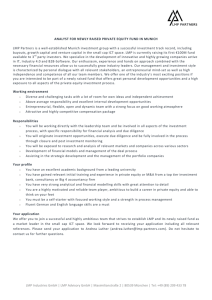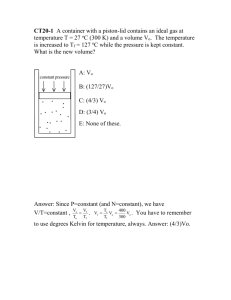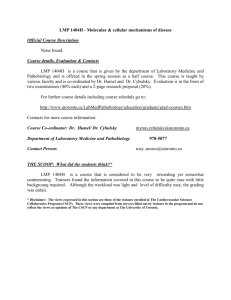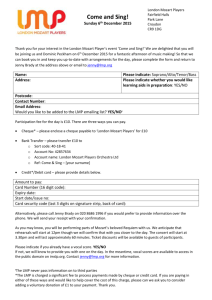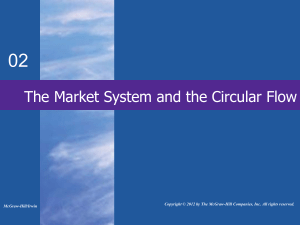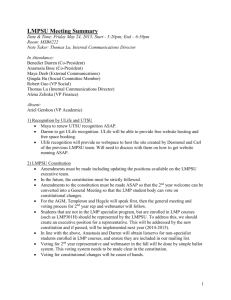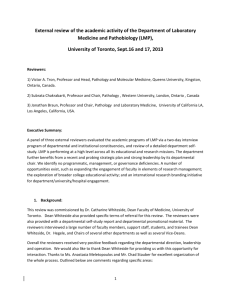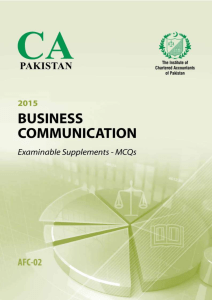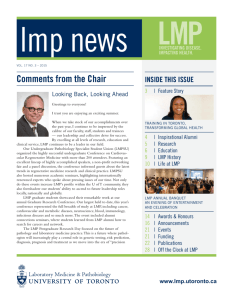Part 2: GDP, Growth, and Fluctuations
advertisement
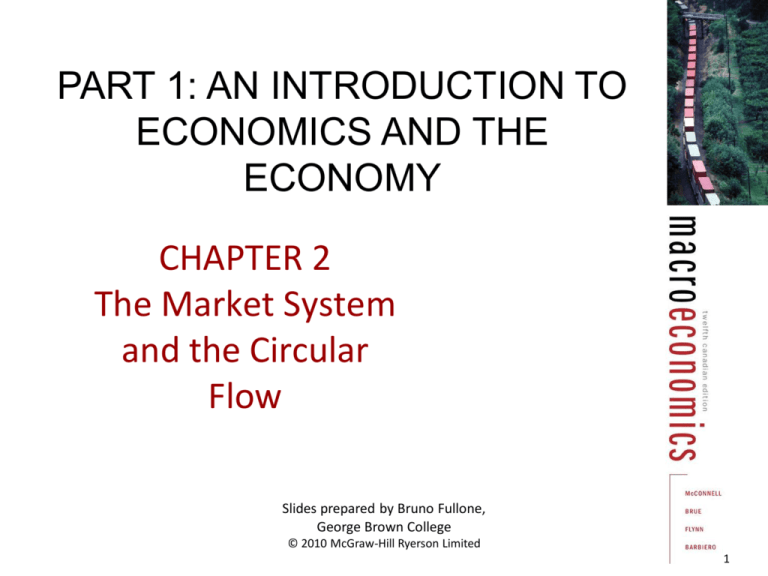
PART 1: AN INTRODUCTION TO ECONOMICS AND THE ECONOMY CHAPTER 2 The Market System and the Circular Flow Slides prepared by Bruno Fullone, George Brown College © 2010 McGraw-Hill Ryerson Limited 1 In This Chapter You Will Learn: • • • • • Learning objective 2.1: The difference between a command system and a market system Learning objective 2.2: The main characteristics of the market system Learning objective 2.3: The five fundamental questions any economy faces Learning objective 2.4: About the demise of the command economy Learning objective 2.5: The mechanics of the circular flow model 2 2.1 Economic Systems Economic Systems A particular set of institutional arrangements and a coordinating mechanism - The command system - The market system LO2.1 3 2.2 Characteristics of the Market System • Private property • Freedom of enterprise & choice – freedom of enterprise: businesses can buy & sell as they choose – freedom of choice: • owners can use or sell property as they choose • workers can work where they like • consumers can buy what they want LO2.2 4 2.2 Characteristics of the Market System • Private property • Freedom of enterprise & choice • Self-interest – businesses seek profits – consumers seek value LO2.2 5 2.2 Characteristics of the Market System • • • • Private property Freedom of enterprise & choice Self-interest Competition – independently acting sellers & buyers – easy entry & exit • Markets and Prices – prices signal scarcity & guide resource allocation LO2.2 6 2.2 Characteristics of the Market System Other Characteristics • Technology & Capital Goods • Specialization – division of labour – ability differences – learning by doing – saving time switching tasks – geographic specialization LO2.2 7 2.2 Characteristics of the Market System Other Characteristics • Technology & capital goods • Specialization • Use of money – Medium of exchange • Active, but limited government LO2.2 8 2.3 Five Fundamental Questions 1. What will be produced? -those goods & services that can be produced at a profit -what consumers vote for with their dollars -market restraints on freedom Consumer Sovereignty LO2.3 9 2.3 Five Fundamental Questions 1. What will be produced? 2. How will the goods & services be produced? -with the most efficient, least-costly methods LO2.3 10 2.3 Five Fundamental Questions 1. What will be produced? 2. How will the goods & services be produced? 3. Who will get the goods & services? -those with the greatest willingness & ability to pay LO2.3 11 2.3 Five Fundamental Questions 1. What will be produced? 2. How will the goods & services be produced? 3. Who will get the goods & services? 4. How will the system accommodate change? -by responding to price & profit signals LO2.3 12 2.3 Five Fundamental Questions 1. What will be produced? 2. How will the goods & services be produced? 3. Who will get the goods & services? 4. How will the system accommodate change? 5. How will the system promote progress? -Technological advance -Capital accumulation LO2.3 13 The “Invisible” Hand • Prices communicate information about scarcity & value • Competition forces producers & resource suppliers to respond • Firms, acting in their own best interest, also promote society’s interests in terms of efficiency LO2.3 14 The “Invisible” Hand Three special merits of the market system: • Efficiency • Incentives • Freedom LO2.3 15 2.4 The Demise of the Command System • The Coordination Problem • The Incentive Problem LO2.4 16 The Circular Flow Diagram Figure 2-2 Factor MARKET FACTORS OF PRODUCTION INPUTS BUSINESSES HOUSEHOLDS LO2.5 17 The Circular Flow Diagram Figure 2-2 FACTOR MARKET FACTORS OF PRODUCTION BUSINESSES INPUTS HOUSEHOLDS GOODS & SERVICES GOODS & SERVICES PRODUCT MARKET LO 2.5 18 The Last Word: Shuffling the Deck • If one thoroughly shuffles a deck of cards, there is a virtual 100% chance that the resulting arrangement of cards will be unlike any previous arrangement. • Yet, even though there are tens of billions of resources in the world, these resources are arranged in such a way as to produce the products and services that serve human needs. LO2.3 19 The Last Word: Shuffling the Deck • Private property eliminates the possibility that resource arrangements will be random because each resource owner will choose a particular course of action if it promises rewards to the owner that exceed the rewards promised by all other available actions. • The result is a complex and productive arrangement of countless resources. LO2.3 20 Chapter 2 Summary 2.1 2.2 2.3 2.4 2.5 The difference between a command system and a market system The main characteristics of the market system The five fundamental questions any economy faces The demise of the command system The mechanism of the Circular Flow model Chapter 2 21
